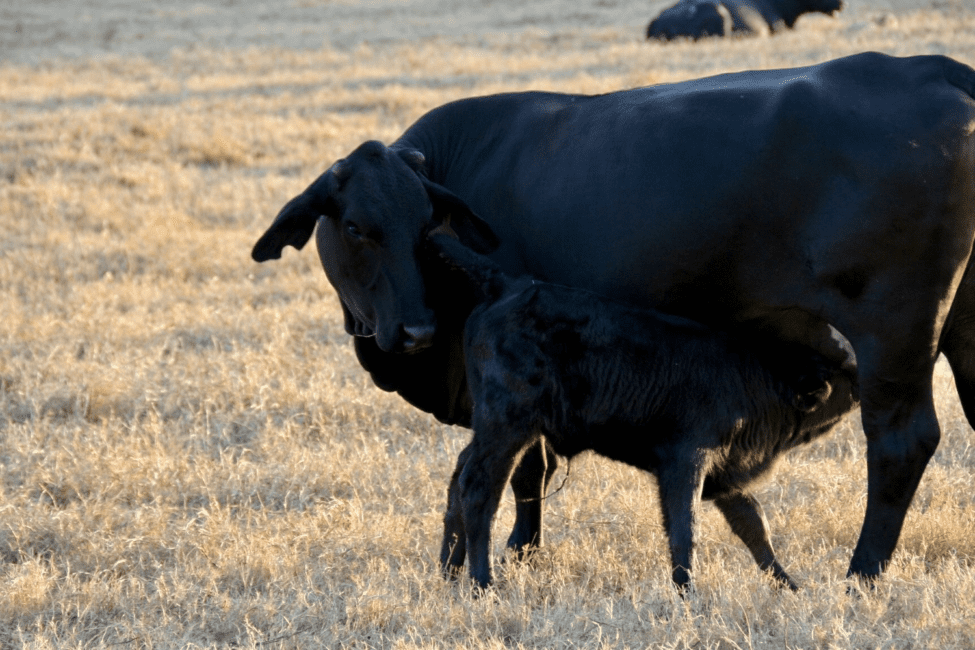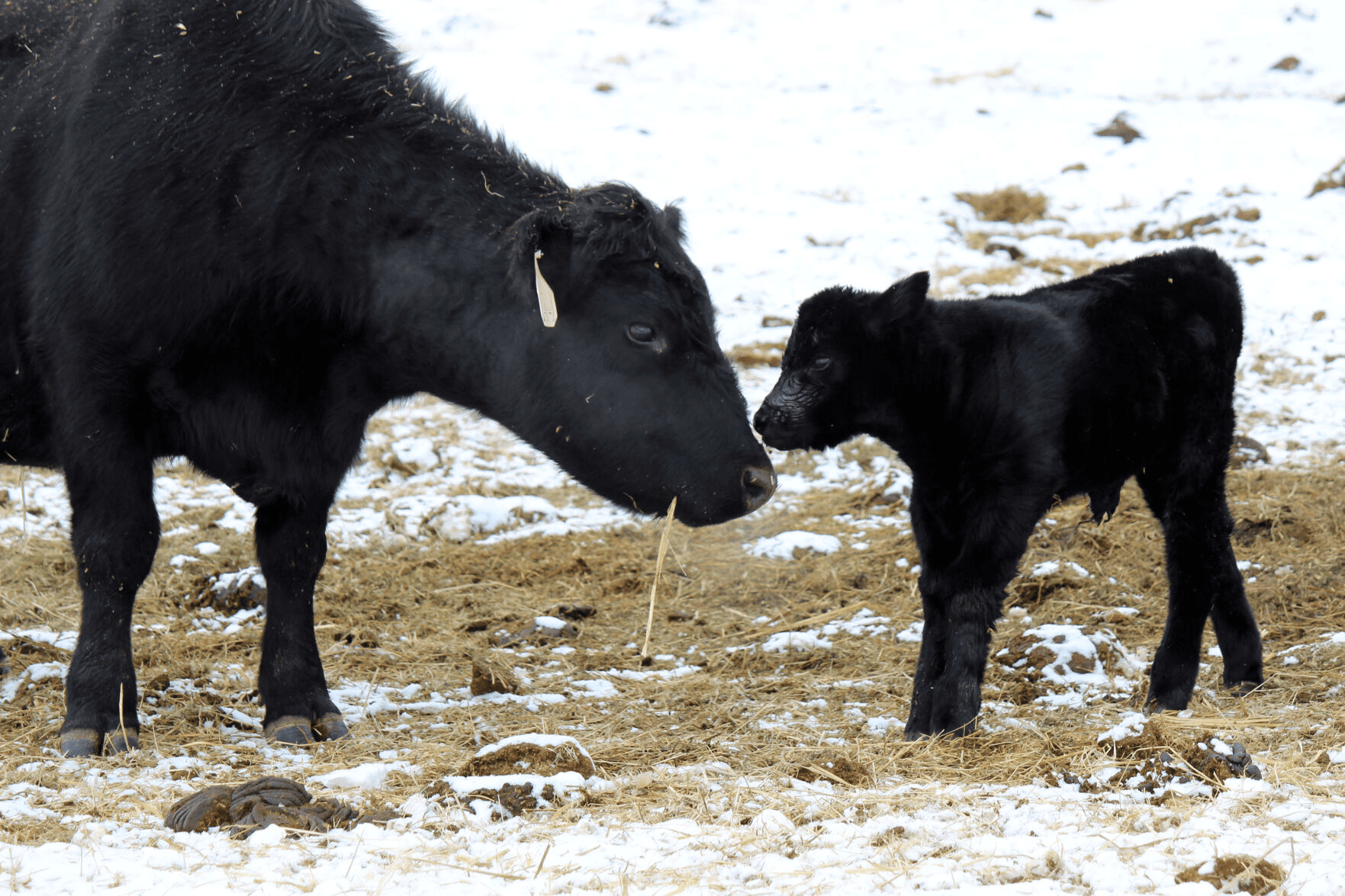The beef cattle are kept mainly for the production of meat, though some breeds can produce appreciable quantities of milk. Beef is one of the world’s most desired food products and contributes immensely in terms of income to any nation.
The economic impact of beef enterprises is further enhanced by income from subsidiary industries such as transportation, marketing, feeds, supplies, vaccines, antibiotics, and financial agencies that survive because of the beef industry.
The management of beef cattle includes the cow-calf program, breeding, herd management in summer and winter, stocker program, finishing program, the baby-beef program, the fat-calf program, the pure-breed program, etc.
Range Bull Management
There are various ways of acquiring range bulls, each method fits a particular operation and has its advantages, and bulls when they are 2 years of age and ready to turn out on pasture or range. Managing bulls before breeding season is very important and if properly conditioned should be capable of breeding 20-25 cows.
At this time a reasonable high-energy ration must be given and then gradually ‘let down’ and not just turn out to forage for themselves. The ’let-down’ period consists of gradually decreasing the high-energy ratio and substituting light feed. Exercise is vital and gradual elimination of the high energy ration will condition the bulls to perform much more efficiently during breeding season.
Young bulls less than 2 years old should be used in only limited service unlike old bulls and should be supplemented with a growing ration balanced for energy, protein, vitamins, and minerals every day.
Two months before breeding season, old bulls should be given increased supplemental feed to make them gain a healthier condition at ‘turn out’ time. Bulls not properly conditional before breeding season may be either too fat or too thin and may experience a lack of libido or lower fertility.
The length of the breeding season determines management. The shorter the season the greater the stress placed on the bull. At a ratio of 25 cows to 1 bull. A concentrated breeding season of 60 days allows only 21/2 days per service while an extended season of 120 days allows practically 5 days for each service. The proportion of bulls to cows is dependent on:
(i) The rougher the topography, the greater the number of bulls required.
(ii) Age of bulls.
(iii) Feed conditions on range during breeding season i.e. lack of feed will force cows to spread out to seek feed thus bulls have to travel distances to check cows. Bulls properly conditioned before breeding season will ensure a high conception rate.
Cow-Calf Program
A cow is pregnant for 280–285 days and if she is to calve every 365 days, she has only 80-85 days from the time of calving until she must be pregnant. Experiments have shown that pregnant cows receiving a moderate level of feed required assistance at birth more than those receiving a low level of feed, thus pregnant cows on the low level of feed experienced less calving problems and low calf losses, but they are slow in returning to heat following calving.
Before calving time, a calving facility such as a pull stall and small pens for cows to ‘mother’ the calves after birth must be provided. Make identification bands available. Sort out heifers 120 days at least from cows for calving to provide them with proper levels of nutrition. Determine expected calving dates.
The nutrient requirements of a cow increase following calving and thus they should be separated from cows that have not calved, but these nutrient requirements have not been well established. The requirements vary according to cow size, milk production of cows, and climate.
It is thus difficult to say that a cow needs this quantity of nutrients after calving. Also, the energy requirements for a cow suckling a calf are the most difficult to supply as energy is required in large amounts and the amount of grass available varies from season and year to year. It is also difficult to measure the amount of energy a cow is getting from a pasture.
Read Also Management of Breeding Stock in Cattle
General Herd Management Practices of Beef Cattle

1. Removal of Bulls
After the breeding season, the herd is gathered and the bulls are separated from the cows; younger bulls are also separated from older bulls and placed in a separate. Thin bulls with supplemental feeds, together with good forage, salt, and other minerals. Periodically spray or treat bulls to control flies and parasites.
2. Management of First-Calf Heifer
Give special treatment to heifers calving for the first time, at second calving, they should be grazed or fed separately from older cows because they are less aggressive and can be pushed away and cannot get their snare of pelleted protein supplement, for example. The heifers are getting a new foot and cannot eat as fast as older cows, providing heifers with some of the best grazing land.
3. Calf Management
(a) Castration when calves are 4-10 weeks. At the same time, the calves can be branded and vaccinated. There are several methods of castration – one that allows for complete drainage; or with the use of a dastrator etc.
(b) Branding and identification either by tattooing numbers on calves ears shortly after birth and/or applying numbered metal or tag (plastic ear-tags).
(c) Vaccination for prevention of blackleg and malignant edema etc.
(d) Detouring which helps the appearance of the animals and prevents injury to others, especially in feed lots.
(e) Parasite control: Separate cows from calves and spray calves first with a lighter concentration of the chemical.
(f) Orphan calves or calves from multiple births should be ‘grafted’ on a cow that has lost her calf or raised by artificial methods.
Some cows may give enough milk to feed twins. They must allowed to take colostrums since antibodies transmitted by it help calves to survive due to the passive immunity that protects them from infectious. Colostrum is a rich source of vitamins and minerals.
Calves can be reared with cold milk provided in containers with nipples. They are also fed fortified grain mixture and can be expected to consume 1b of dry feed per head at 3 weeks. Dry feed consumption increases as calves get older. Most commercial milk replacements and starter feeds can provide adequate nutrition if used as directed.
Read Also Equipment and Management Practices in Ruminant Production
Calf Weaning
Weaning represents both a nutritional and psychological change in the life of a young animal after 7-8 months of life in constant association with its mother for protection and food. The time to wean depends on the season type of management. Weaning calves are influenced by the time of the year and whether they are to be kept as stockers or sent directly to the feedlot.
Weaning by separating the calves from the cows at a considerable distance so that the calves are out of sight/or hearing of prolonged bawling of cows. The calves should be encouraged to eat as fast as possible.
During the first few days, they should be confined to small areas to cut down on walking and weight loss. They should be divided into groups according to
size and sex and be protected from the harm of weather conditions and predators. Provide clean water always and palatable feed – corn or sorghum silage with a protein supplement, high-quality grass-legume hay plus a concentrate supplement, or a combination of these feeds.
Before weaning calves’ feeds are placed in creeps where only they have access to calves should not be disturbed during the first few days after weaning.
Management of Dry Beef Cows
First feed the animal accordingly. There is a considerable variation in the amount and quality of feed needed by individual cows. Age, maturity weight, and condition of the cow are major factors that determine her feed requirements. Management of dry herd demands that the cows and heifers be divided into groups according to their feed needs.
The nutrient requirements of dry, pregnant, mature cows as regards energy, protein, minerals, and vitamins are all essential and needed in varying amounts by pregnant cows.
In conclusion, the obvious goal of beef cattle production is to obtain maximum benefit over an extended period. The management of beef cattle involves very careful feeding and supervision of range bulls, cows, and calves, weaning of calves, etc.
To meet the desired costs in management including feed, labor, investment in land, cattle, and equipment. Management does not relate only to minimum costs but also to timely marketing of calves, culling cows and bulls, and persistent in the production of breeding herd.
The management of beef cattle at various stages of growth is determined by their nutritional and psychological needs as well as the managerial skills of the herdsman. This explains why the skills involved in the management of calf, calf weaning,first-calf heifer, etc. are slightly different.
Read Also Food Preservation Methods






